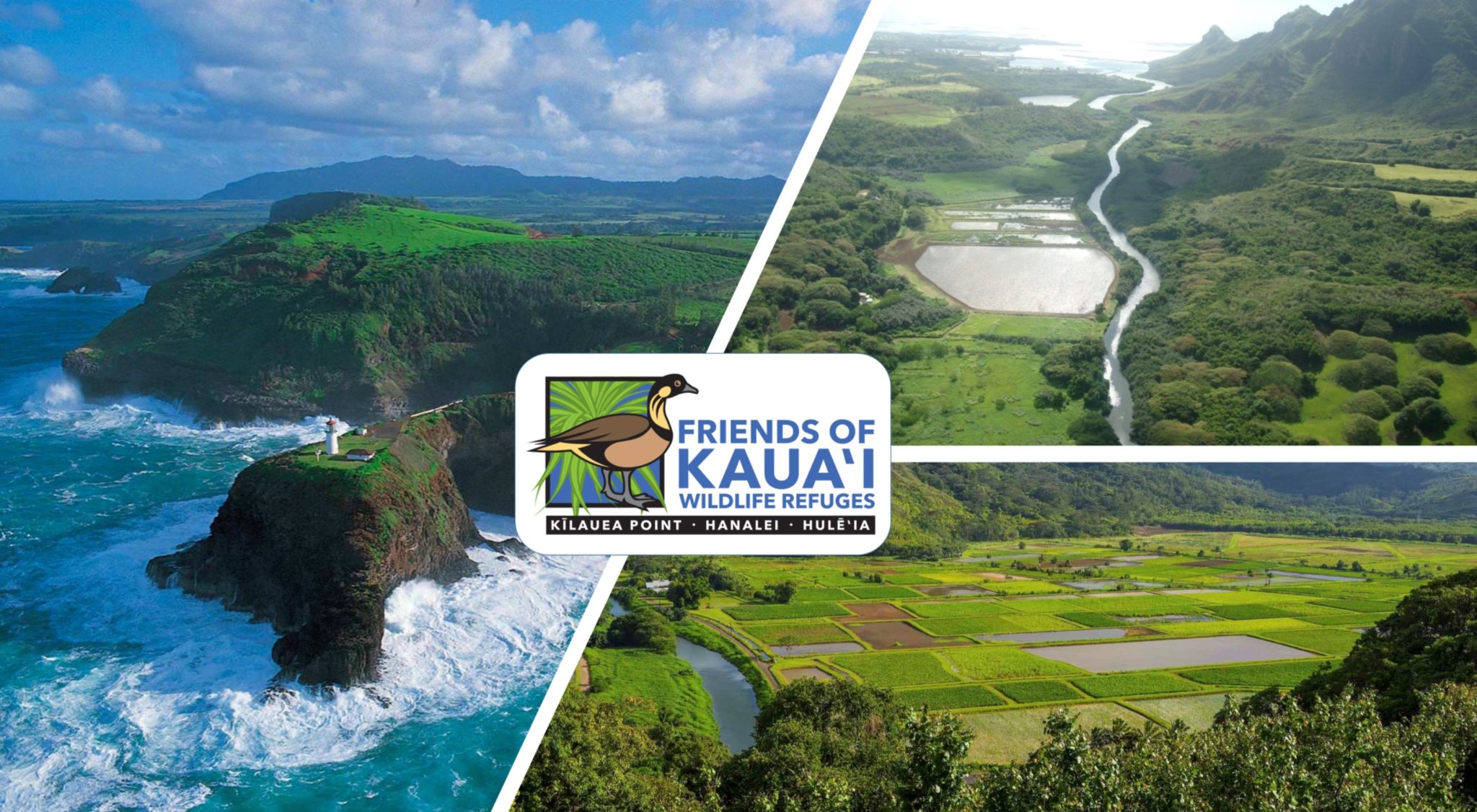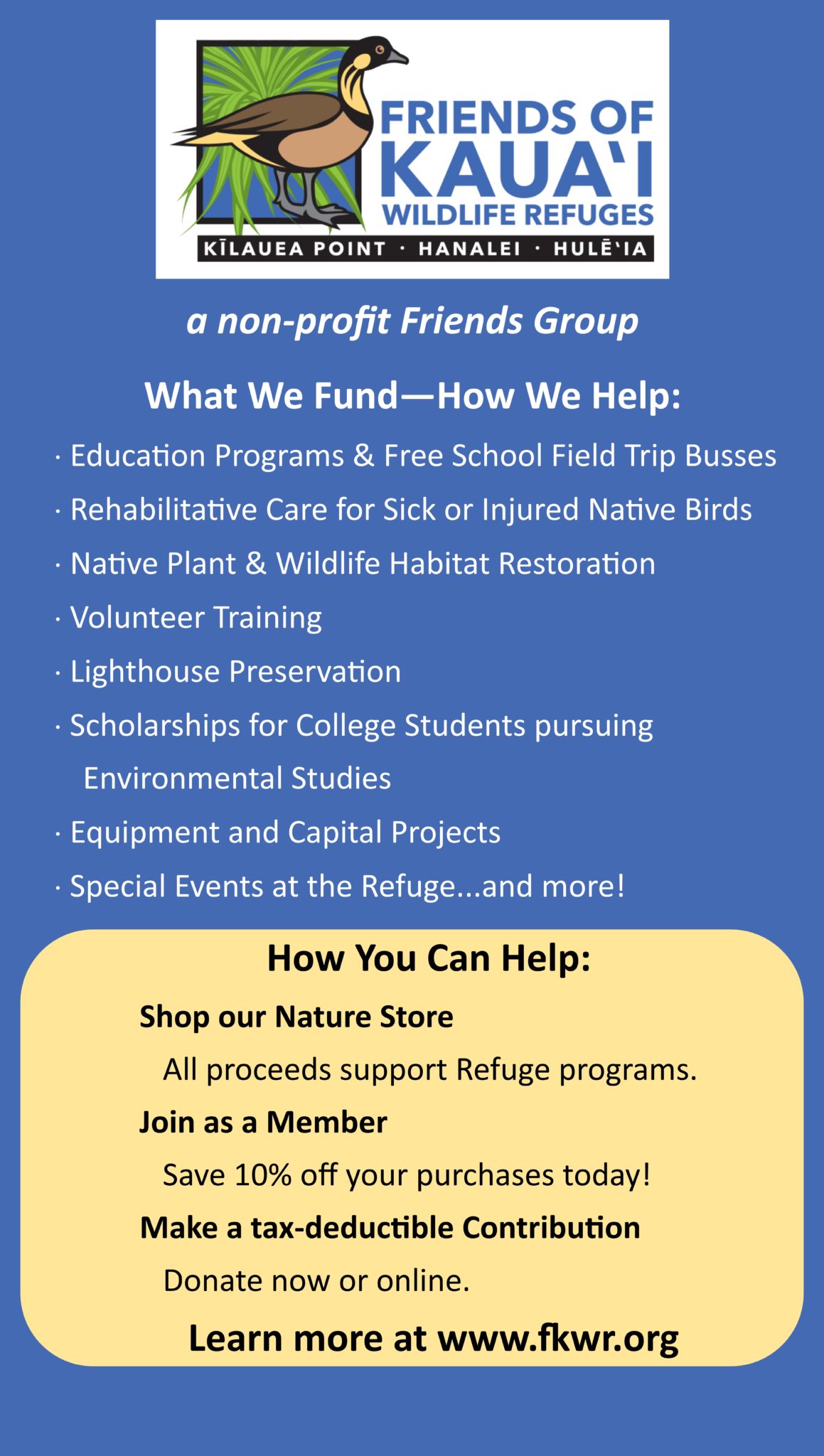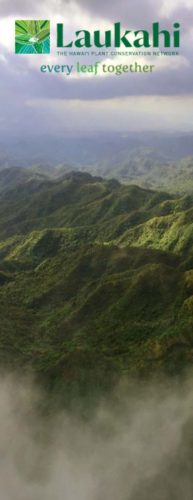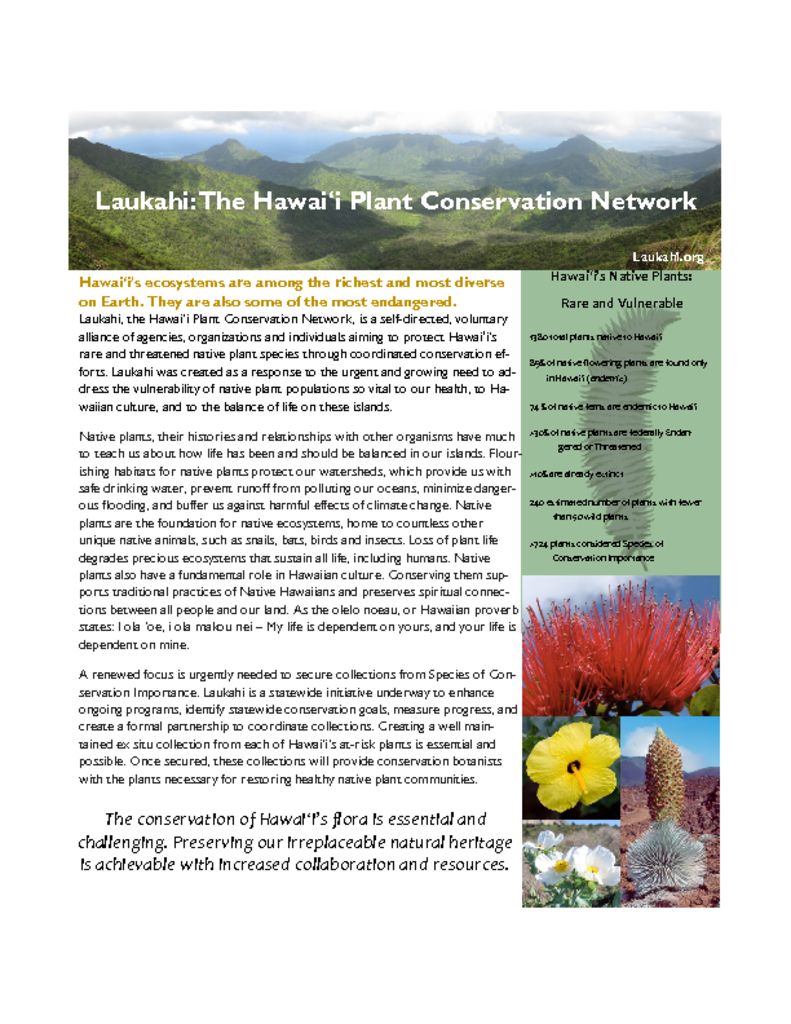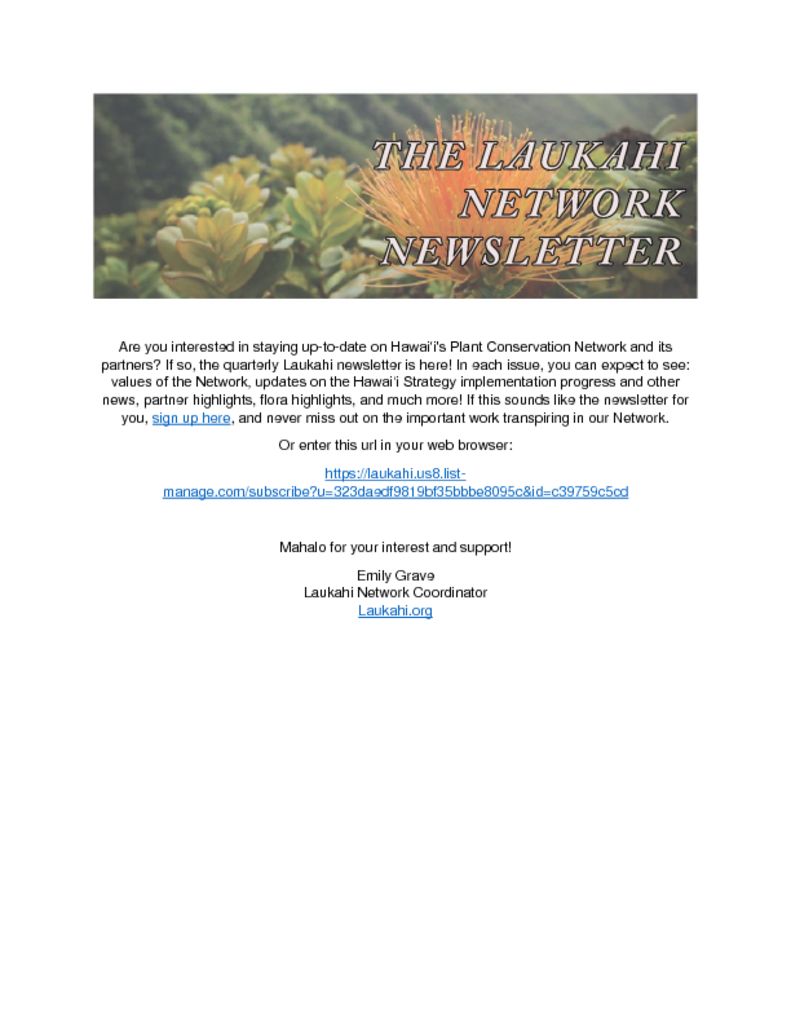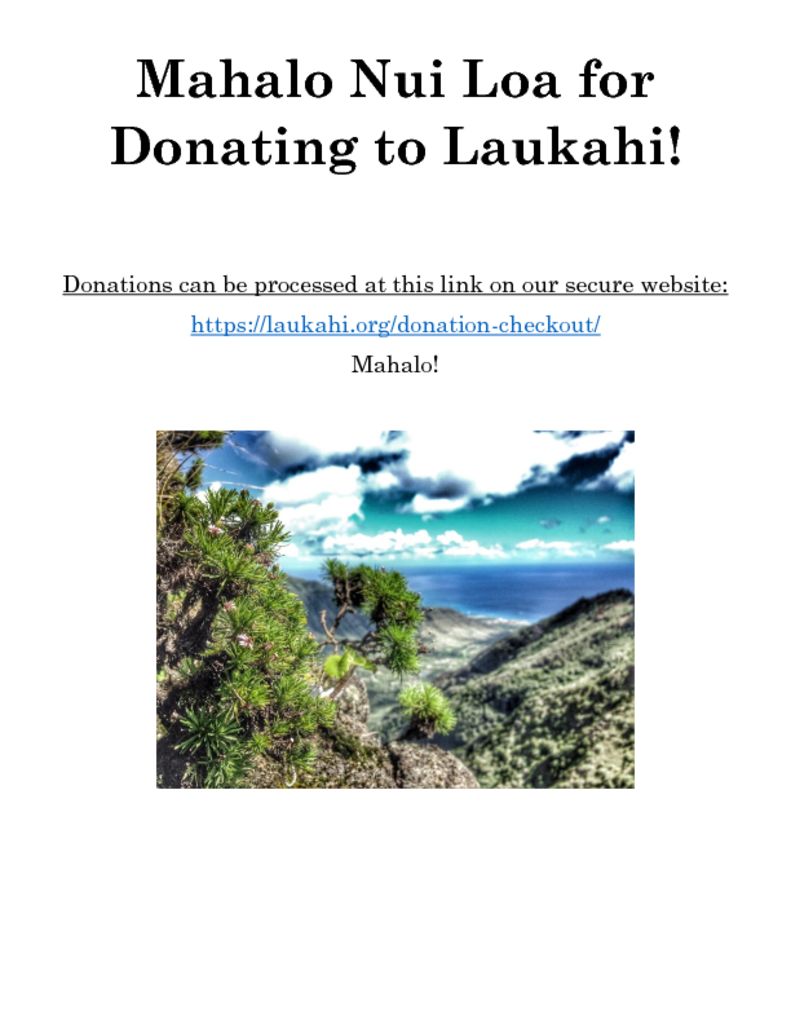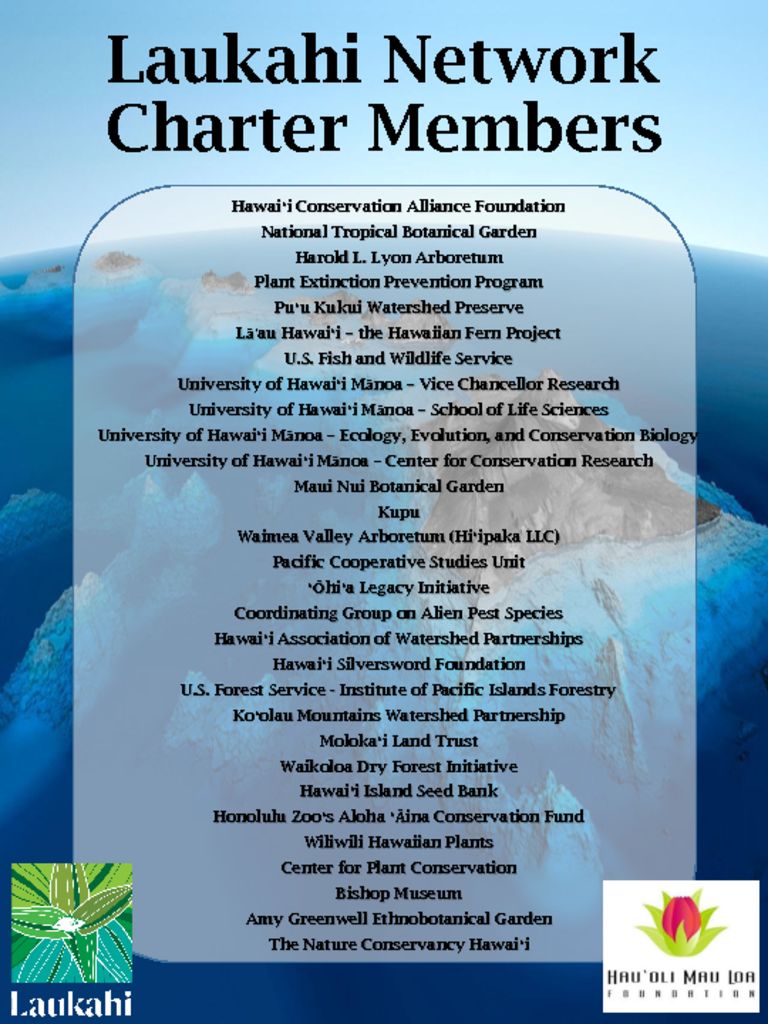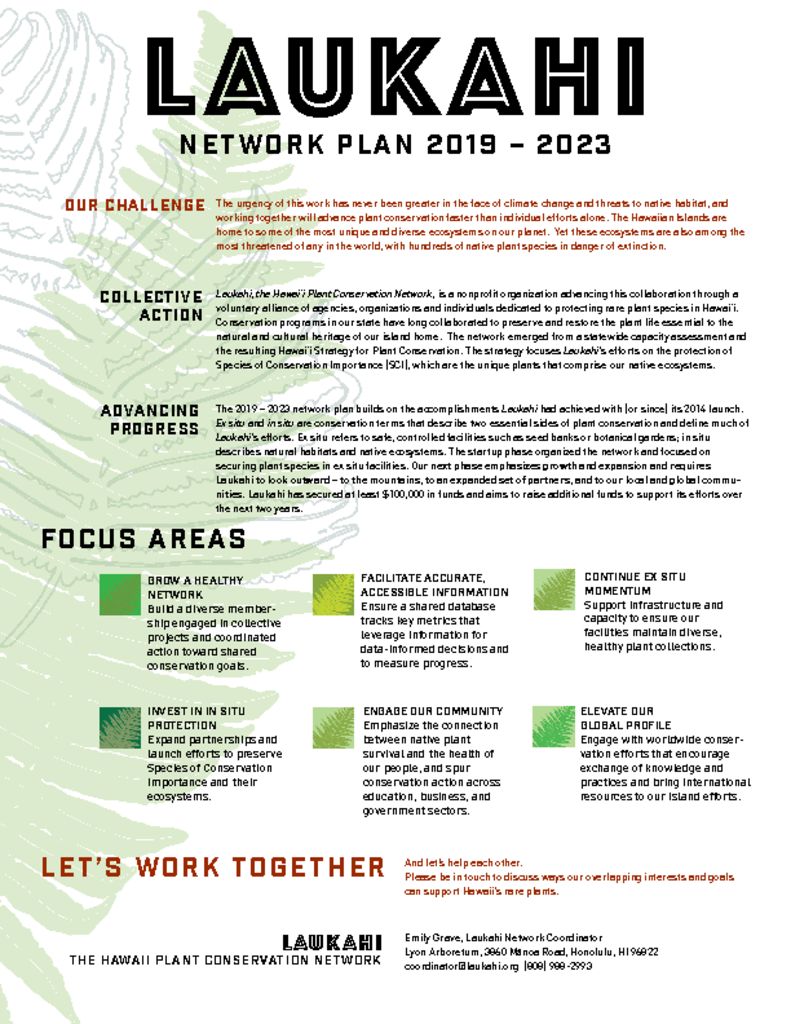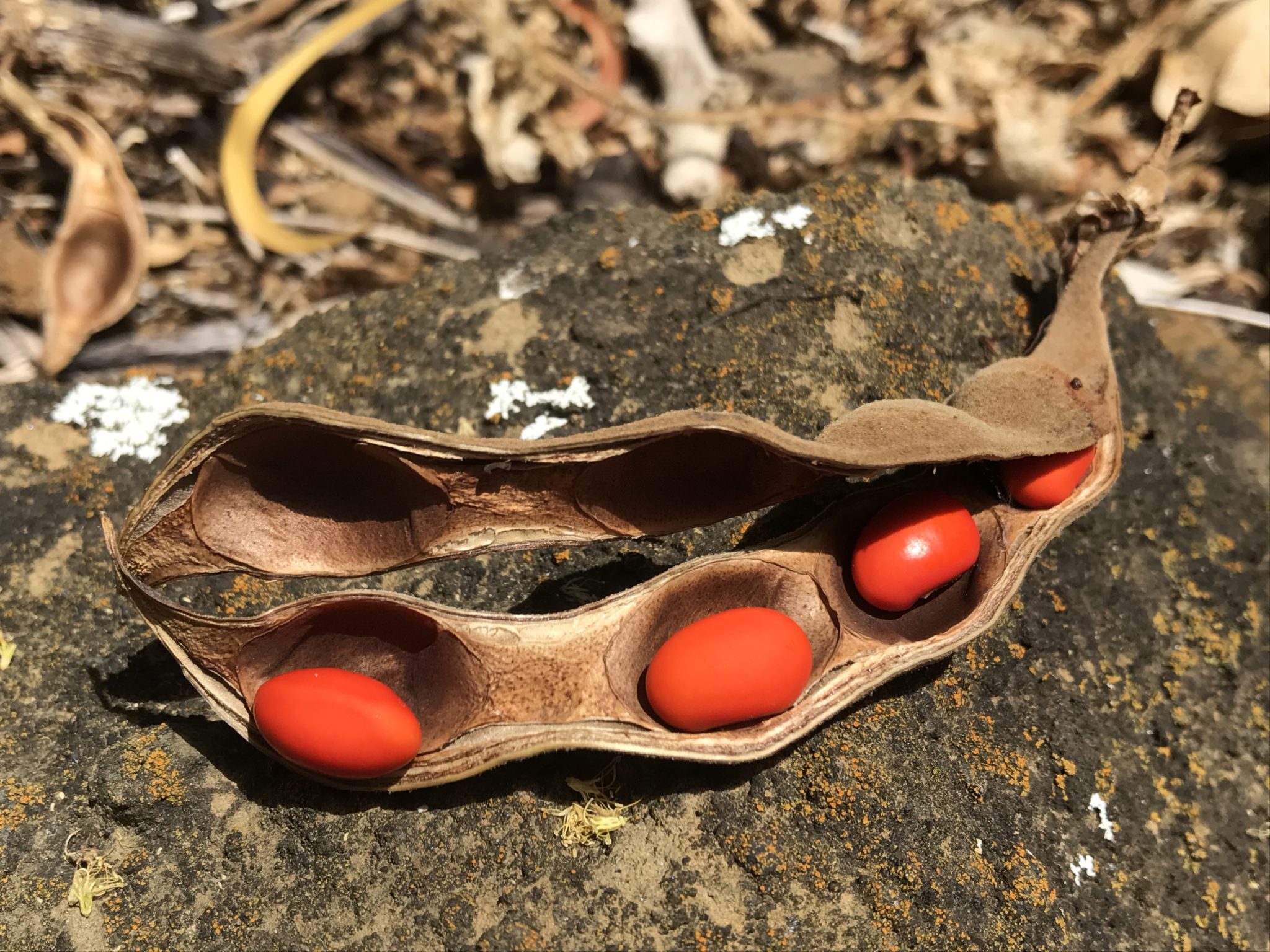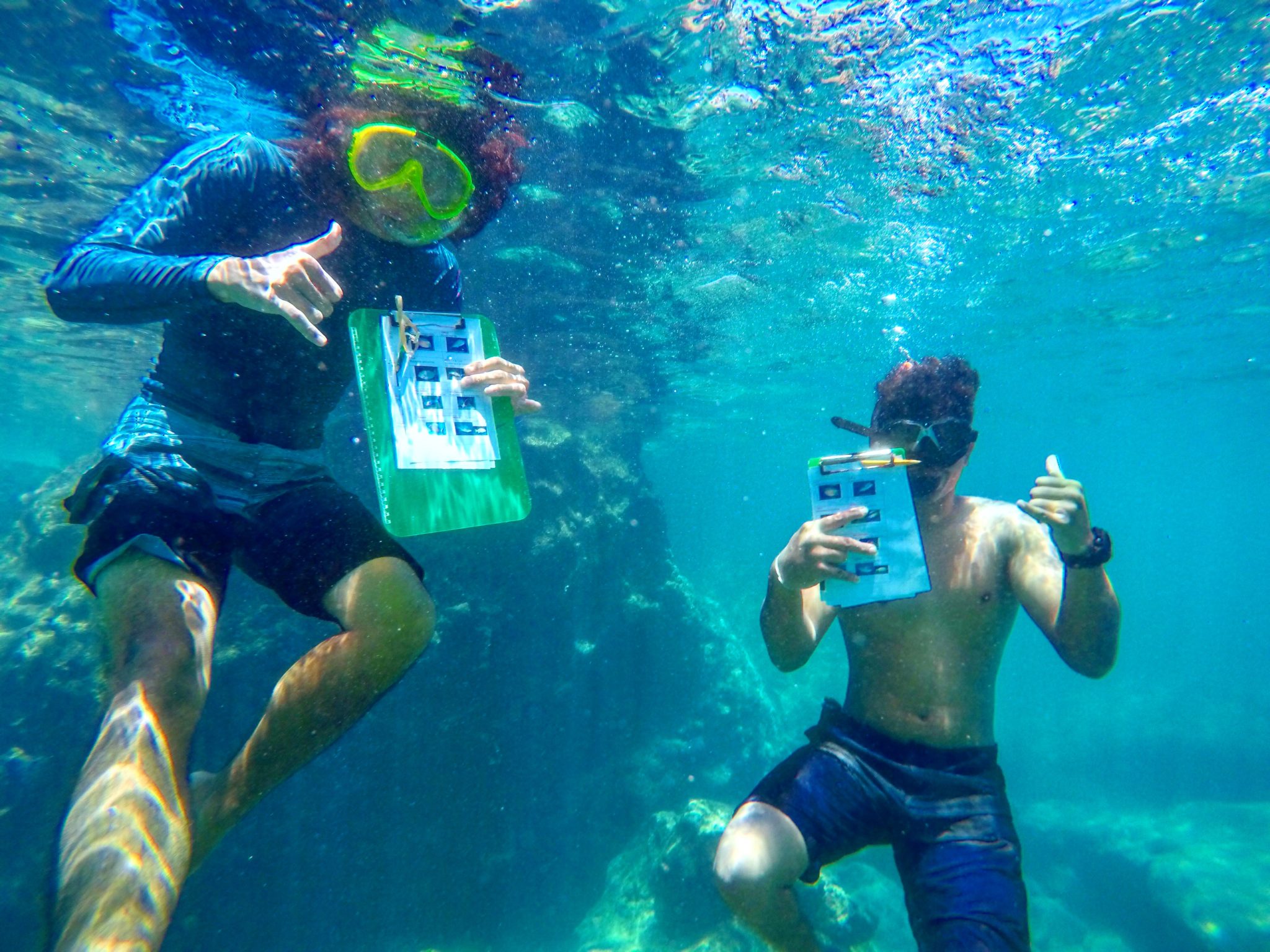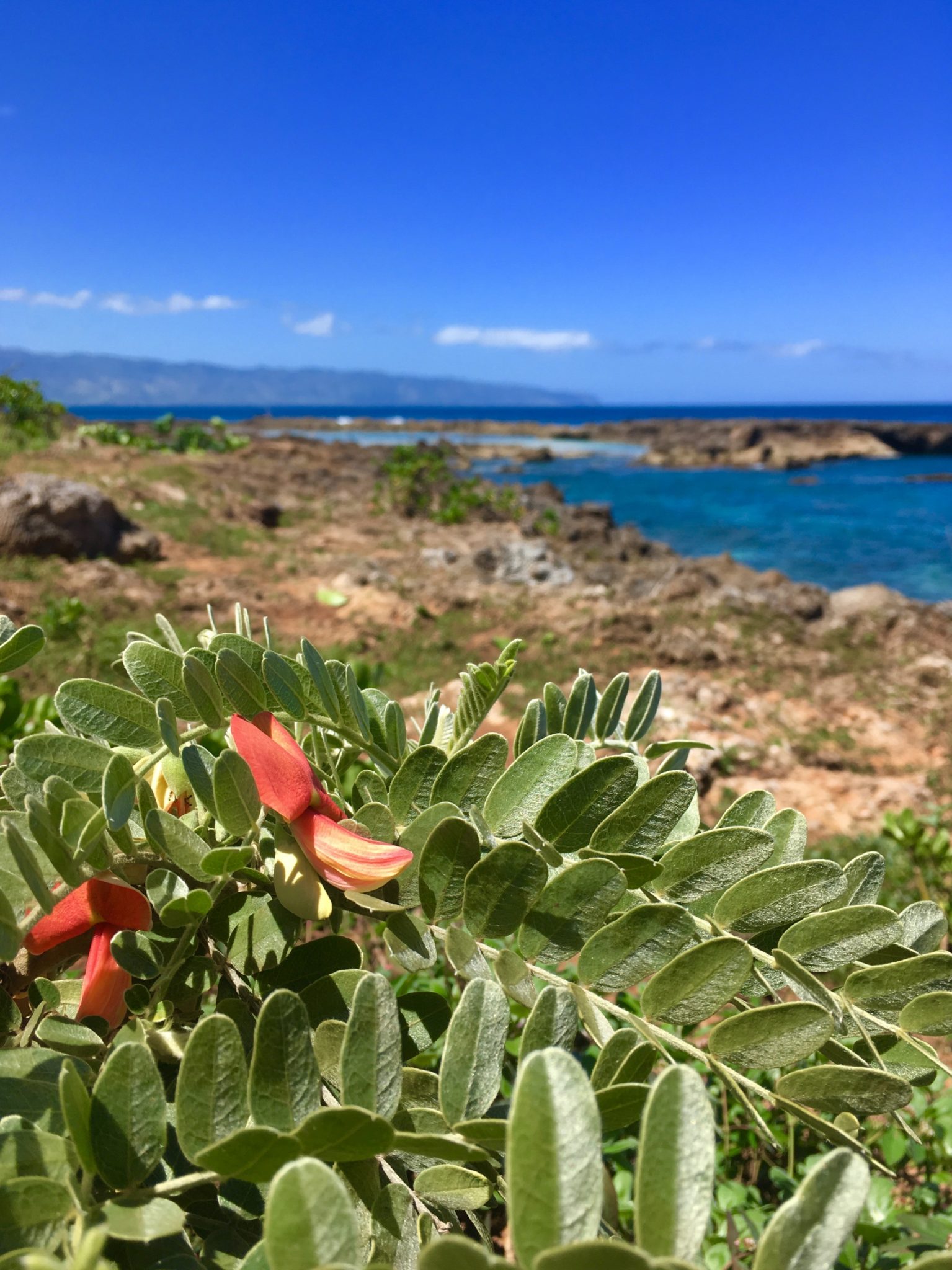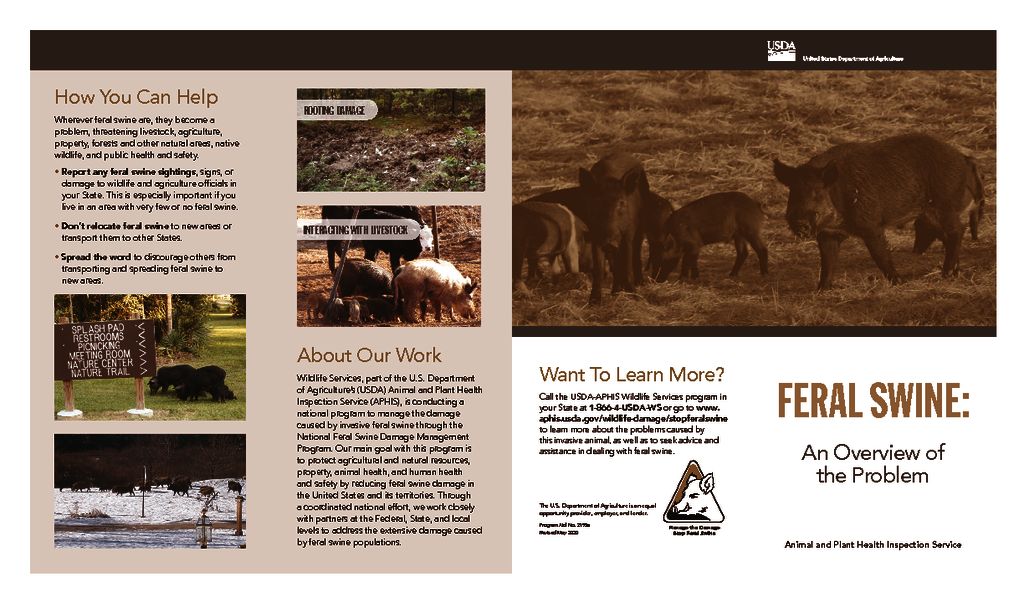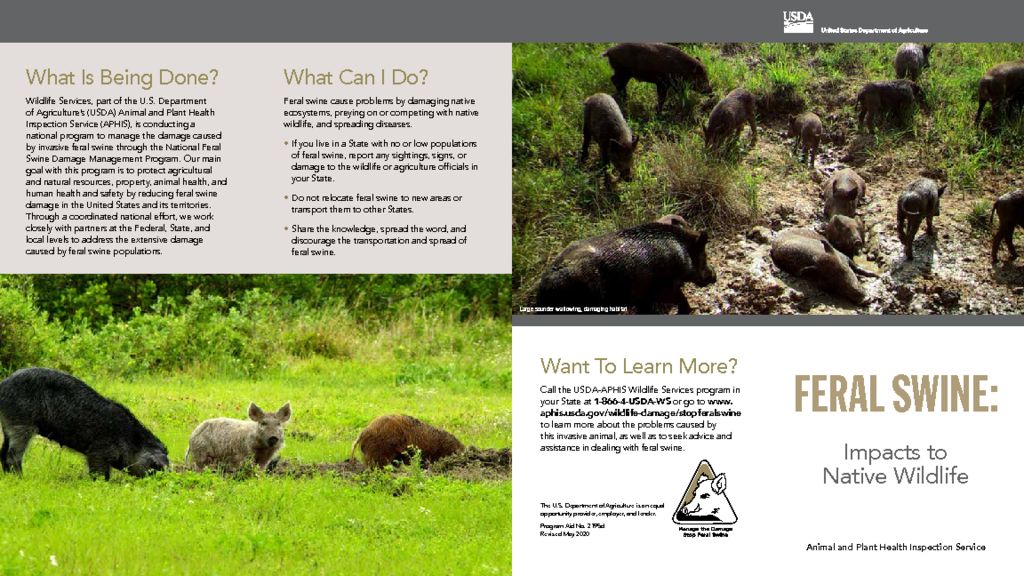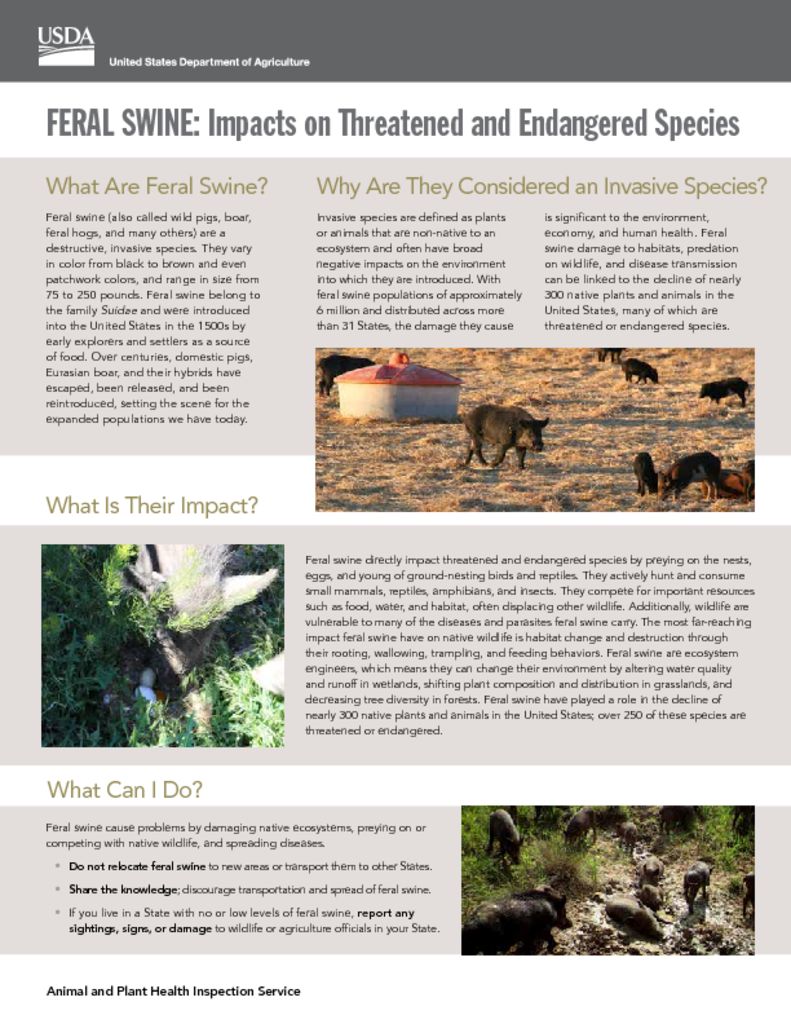Virtual Exhibit Hall
Welcome to the 2021 Hawaiʻi Conservation Conference Virtual Exhibit Hall!
Take a look below to see our featured Virtual Exhibitors! Each tab on the left hand side is a separate exhibit table for an individual organization. Please take note that our Virtual Exhibitors will be available during our Conference Networking sessions to chat and connect with. Each Virtual Exhibitor has listed which Networking sessions they will be available for. The Networking sessions can be accessed through the Conference Agenda or through the “Enter Networking Space” button at each Exhibitor’s table.
Be sure browse through the awesome content our Virtual Exhibitors have prepared for you! Take advantage of the Networking sessions to connect, network and learn about these different organizations.
- Hawaiʻi Conservation Alliance & Foundation
- Conservation Connections
- Conservation Career Compass
- HCA Nāhululeihiwakuipapa (Next Gen) Subcommittee
- Bernice Pauahi Bishop Museum
- Friends of Kauaʻi Wildlife Refuges
- Hawai‘i Endangered Bird Conservation Program
- Hawaii Invasive Species Council
- Hawaii Wildlife Center
- Laukahi: Hawaiʻi Plant Conservation Network
- Mālama Pūpūkea-Waimea
- Maui Forest Bird Recovery Project
- National Park Service
- Pacific Islands Climate Adaptation Science Center (PI-CASC)
- State of Hawaiʻi Division of Forestry and Wildlife
- The Nature Conservancy, Hawaiʻi and Palmyra
- University of Hawaiʻi Press
- USDA APHIS-Wildlife Services
- Waimea Valley

Hawaiʻi Conservation Alliance & Foundation
The Hawaiʻi Conservation Alliance is a partnership of organizations and agencies working together to provide unified leadership, and collaborative action to conserve and restore native ecosystems and the unique biodiversity of our islands.
Learn more about us at: https://www.hawaiiconservation.org/
Meet our Staff at: https://www.hawaiiconservation.org/the-alliance/staff/

Conservation Connections
Conservation Connections is a one-stop shop for students, professionals, the conservation community, and the broader Hawaiʻi community to find environmental stewardship opportunities across the Hawaiian Islands. It provides real-time opportunities being posted by the 200 plus organizations who have created a profile on Conservation Connections. Opportunities include volunteering, jobs (part-time and full-time), internships, and events. It is also a good resource to find a directory of conservation organizations across Hawaiʻi.
Sneak peak of current opportunities available and listed on Conservation Connections. To see the full listings visit http://www.conservationconnections.org/:
Volunteering
- Friday April 9th 9 AM – 12 PM: Kaha Native Plant Garden
- Organization: Hui o Koʻolaupoko
- http://www.conservationconnections.org/opportunities/volunteer/16570/kaha-native-plant-garden
Internships
- Conservation Leadership Development Program
- Organization: Kupu
- Deadline: July 3rd, 2021
- http://www.conservationconnections.org/opportunities/internship/1973/conservation-leadership-development-program-paid-opportunities-statewide-11-months
Jobs
- Director of Conservation
- Organization: The Nature Conservancy – Hawaiʻi
- Deadline: April 12th
- http://www.conservationconnections.org/opportunities/full-time/1955/director-of-conservation

Conservation Career Compass
The sister site to Conservation Connections, Conservation Career Compass focuses on the stepping stones needed to be successful in obtaining a career in conservation. It provides listings of various academic programs, scholarships, fellowships, internships, and volunteering. Uniquely, the website houses Navigator Spotlights (video and written interviews with current conservationists in Hawaiʻi who share their story and journey in the conservation field and give advice to the next generation. In addition, through blog style articles on the Career Guidance page, we offer tips on topics such as interviewing, applying for a job, resume writing, specific professional/personal development and more.
Explore your career pathway today at: http://www.conservationcompass.org/

HCA Nāhululeihiwakuipapa (Next Gen) Subcommittee Exhibit Table
Nāhululeihiwakuipapa is a subcommittee under the Hawaiʻi Conservation Alliance that develops and implements projects that cultivate and model conservation leadership in Hawaiʻi using trans-disciplinary strategies, generational bridging, and Hawaiian Values to support the growth of future generations of environmental stewards.
He inoa: Nāhululeihiwakuipapa – The name given to the aspiring professionals of this field
The feather lei is the garment of divine aloha and symbol of protection for our natural environment. The feathers which make up the lei are sacred gifts from nā manu Hawaiʻi, those creatures which soar through the heavens and serve as a link between the Divine Creator and man.
The Leihulu, feather lei, made by Kuipapa. It is the style where new feathers manifested by Akua are perfected for placement by man and arranged in the pattern designed by Akua.
We shall be compared to the feathers of the lei. And let our mindset and work string us together (kui) and be reflective of the good training we’ve had and that we will provide in the future. May we help the Lei Maker (Akua) design a future for Hawaiʻi that will please the ancestors, create health, peace and balance for the people (feathers) who will follow us for seven generations. May our lei be the symbol of protection for our natural world and bind our spirits together.

Our Programs
The subcommittee focuses on two main events and activities: the Nāhululeihiwakuipapa Emerging Professionals Workshop and the Pūlama Kuamoʻo Mentorship Program both at the annual Hawaiʻi Conservation Conference.

Become a Nāhululeihiwakuipapa Subcommittee Member!
Are you interested in joining the Nāhululeihiwakuipapa subcommittee? Please visit our Nāhululeihiwakuipapa Subcommittee page to learn more or contact a subcommittee member. We welcome individuals from organizations that have focused efforts on developing innovative internship and leadership development programs for Hawaiʻi’s local youth. A critical
component of effective conservation in Hawaiʻi is the development and sustainability of career pathways and networks for local professionals connected to Hawaiʻi’s natural and cultural resources.
- Tara Meggett: capacity@hawaiiconservation.org
- Lorena “Tap” Wada: lorena_wada@fws.gov
The subcommittee includes members from organizations such as The Nature Conservancy – HI, Conservation International – HI, US Fish and Wildlife Services, Kupu, Hauʻoli Mau Loa Foundation, Pacific Internship Programs for Exploring Sciences (PIPES), Nā Hokua, UH Hilo, UH Mānoa, Society for Conservation Biology – Hawaiʻi Chapter, National Oceanic and Atmospheric Administration (NOAA), Hawaiʻi Pacific University.

Bernice Pauahi Bishop Museum Exhibit Table
Aloha! Bishop Museum’s mission is to inspire our community and visitors through the exploration, celebration, and perpetuation of the extraordinary history, culture, and environment of Hawai‘i and the Pacific.
Learn more about us by visiting www.BishopMuseum.org. Mahalo nui loa!
About Bernice Pauahi Bishop Museum:
Bishop Museum was founded in 1889 by Charles Reed Bishop in memory of his wife Bernice Pauahi Bishop, a royal descendant of King Kamehameha I. Today, the museum thrives as an educational center for the community and is widely regarded as the world’s premier institution for Hawaiian and Pacific content.
Its vast collections of more than 25 million objects and specimens represent nine disciplines and include more than 22 million biological specimens, over two million cultural objects, 115,000 historical publications, and one million photographs, films, works of art, audio recordings, and manuscripts. These collections tell the stories of the cultures and biodiversity of Hawai‘i and the Pacific as well as the proud legacy of scholarly research spanning 130 years.
Bishop Museum proudly serves more than 200,000 visitors each year, including 20,000 children on school visits. To learn more about the museum’s research, collections, exhibits, and programs, please visit BishopMuseum.org, follow @BishopMuseum on Twitter and Instagram, become a fan of Bishop Museum on Facebook, visit Bishop Museum’s YouTube channel, or email communications@bishopmuseum.org. Bishop Museum is a 501(c)(3) nonprofit organization.
What’s New at Bishop Museum
POW! WOW! The First Decade: From Hawaiʻi to the World, presented by Hawaiian Airlines showcases some of the most notable Hawai‘i-based artists, international street artists, and sculptors. This exhibition features over 160 artists, with 30 artists creating new murals and installations curated by POW! WOW! Founder Jasper Wong within the gallery and throughout Bishop Museum’s campus.
Experience large-scale murals from internationally renowned artists such as Cryptik, Hueman, Tristan Eaton, Andrew Schoultz, Persue, Kevin Lyons, Amy Sol, How Nosm, Greg Mike, and many others. View works by local muralists including OG Slick, Solomon Enos, Carl Pao, Cory Taum, Woes, Hula, and Wooden Wave. Large-scale original paintings will also be on view, from Defer, Shepard Fairey, Brendan Monroe, Jon Burgerman, Edwin Ushiro, Tatiana Suarez, Simone Legno of Tokidoki, and more.
Within the gallery space is a series of over 120 new 2’x2’ paintings by international and local artists, curated by Andrew Hosner of Thinkspace and Jasper Wong.
On view through September 19, 2021
In (Re)Generations: Challenging Scientific Racism in Hawaiʻi, explore how the Sullivan Collection, despite its problematic racist origins, has taken on new life as one of the Museum’s primary sources for genealogical research, and as a vehicle for rediscovering ancestors and genealogical connections.
Our hope is that this exhibit is not an end in itself, but rather aims to start conversations on how the Museum can better connect with and serve Native Hawaiian communities and stakeholders.
On view through October 24, 2021.
On display in in Hawaiian Hall, one of our Signature Galleries: the pāʻū of Nāhiʻenaʻena.
This beautiful pāʻū, or skirt, is the first known example of a feathered garment made for a woman. It was created for Nāhiʻenaʻena, daughter of Kamehameha the Great and high chiefess Keōpūolani, and beloved sister of Liholiho (Kamehameha II) and Kauikeaouli (Kamehameha III). This pāʻū is the single largest piece of Hawaiian featherwork ever made, originally measuring 20 feet long and 30 inches wide.
pāʻū
Ethnology Collection, 06831
Feathers of of ʻōʻō (Moho nobilis) and ʻiʻiwi (Vestiaria coccinea) birds, netting of olonā (Touchardia latifolia), cordage.
Bishop Museum’s Malacology captive rearing facility and living collection holds over 12,000 live native Hawaiian land snails, encompassing about 25 different threatened and endangered species. Each year, this collection has contributed to the release of at least 2,000 captively reared snails back into their habitats, primarily into “predator-proof” areas.
Invasive snails continue to invade Hawai‘i each year. Many of these species damage plants and carry diseases that infect humans, livestock, crops, and native species. Our malacologists conduct studies to update species identification and distribution data needed to develop control measures to slow the spread and mitigate impacts of invasive species.
Inspiring and training the next generation of conservation stewards is central to our mission in preserving and perpetuating the natural and cultural history of Hawai‘i and the Pacific.
Biodiversity and Tardigrades – Pacific Center for Molecular Biodiversity
Biodiversity, the sum of all life in its infinite and extraordinary forms, is critical for sustaining the functions and services on which plants and animals rely. Ecosystems, comprised of diverse plants, animals, and microbes are responsible for providing clear air, clean water, food, and other products, yet we only know of about 25% of the estimated 10 million species on Earth – the vast majority of which consists of invertebrates.
Tardigrades are microscopic insect relatives that live in terrestrial and aquatic habitats, with most of them living in films of water found on lichens, mosses, and other semi-aquatic environments. They were first discovered nearly 250 years ago and given the name Tardigrada, or “slow walkers,” and since then scientists have discovered more than 1,300 species. This number already far exceeds early estimates of the total number of species of water bears that were thought to exist, indicating that their true diversity remains unknown, particularly in biodiversity hotspots like Hawaiʻi. Scientists have so far recorded about 70 species in Hawaiʻi, yet sporadic surveys and ongoing work at the Museum indicate that there may be as many as 100 or more species yet to discover. Many of the 70 species reported so far have yet to be fully identified, and may turn out to be endemic, or undescribed species new to science.
Mt. Kaʻala Tardigrade Study
As part of our ongoing efforts to better understand biodiversity in general, and that of tardigrades specifically, we are conducting surveys of tardigrade microhabitats along an elevational gradient on Mt. Kaʻala, the highest mountain on the island of Oʻahu. In 2016 and in 2021, we collected cryptogams, which include moss, lichens, and liverworts, the preferred habitat of tardigrades and many other limno-terrestrial animals, from 12 locations, starting from the base of the mountain and ending at the summit, more than 1,200 meters in elevation. These samples are examined for the presence of tardigrades. After collecting the tardigrades from each sample, we are using traditional microscopic techniques (FIG) and modern molecular approaches like DNA sequencing (FIG) to help us better identify the tiny water bears, some of which are only two-tenths of a millimeter. This data is then analyzed to better understand how tardigrade diversity might vary over the elevational range, and across different microhabitats (i.e. different species of mosses and lichens). Such information not only fills the biodiversity knowledge gaps that are so severe for animals like tardigrades, but also provides insights into the factors that shape the distributions of biodiversity, thus allowing us ot make predictions about how these and other organisms will respond to continued climate change.
Environmental variables such as temperature, precipitation, and sun exposure are changing rapidly because of human induced climate alteration, and these changes are impacting all life. Without detailed knowledge of biodiversity and how these changes will impact existing species, it is not possible to develop plans to mitigate them.
Bishop Museum Natural Sciences
The centerpiece of the Bishop Museum Botany department is its herbarium. Founded in 1889, the Herbarium Pacificum holds the largest and most comprehensive collection of Hawaiian and tropical Pacific Island plant specimens including over 225,000 from Hawai‘i and 210,000 from Pacific Oceania. The herbarium also features an important reference collection of over 125,000 specimens representing species from around the world, which is particularly important for identifying new plant introductions to the islands.
Bishop Museum’s Entomology Collections have a long and distinguished record. Its collections serve as the principal US-based entomological resource for documentation of biological diversity and ecosystem studies in the Pacific and Asian regions and are a major national and international systematic resource. The uniqueness and breadth of the collections and their central Pacific location fosters wide international recognition and use, including use as a type and voucher repository.
The collection holds large but unknown numbers of endangered, threatened and extinct species. For virtually all arthropods, not enough research has been completed to even begin listing endangered or threatened species. This therefore is a critical resource for understanding the previous working of and future problems associated with the disruption of natural processes. One example is the Hawaiian beetle collections of which possibly 75% can be considered for listing as endangered or threatened.
The Ichthyology collection was established in 1889 with a small sampling of fishes from off the west coast of North America by the United States Fish Commission vessel Albatross. From that modest beginning, the current collection contains over 40,000 cataloged lots (more than 102,000 specimens) obtained from expeditions throughout the 20th century through today. Collection holdings are from all of the major island groups and tropical regions of the Indo-Pacific. Although the primary emphasis is coral reef species, deep benthic and epipelagic fishes of the central Pacific and the freshwater native fishes of the Hawaiian Islands are also represented.
The collection holds virtually all of the known species of reef and shore fishes in the Indo-Pacific region. Also, it is the best maintained, documented, and identified collection of Indo-Pacific fish species in the world, with numerous collecting sources. It is particularly well known for material collected and studied by John E. Randall, one of the most prolific and widely respected fish researchers in the region, who began working in the collection in 1965.
Bishop Museum has one of the most comprehensive collection of Pacific island land snails in the world. The approximately 25,000 islands of the Pacific Ocean harbor more than 6,000 land snail species, most of which are only found on a single island or archipelago. Unfortunately, molluscs, particularly Pacific island land snails, have the highest recorded extinction rate of any major animal taxonomic group, making the Museum’s collection all the more important. This collection (6+ million specimens) includes representatives of many extinct, endangered, and threatened species and more than 300 undescribed species.
The Invertebrate Zoology Collection at Bishop Museum contains over 35,000 cataloged lots with over 1,000 type specimens. It is the only collection in the world devoted solely to marine invertebrates of the Pacific islands, with its primary focus being the Hawaiian Archipelago. It primarily houses marine animals that span multiple animal groups, including Porifera (sponges), Cnidaria (corals, jellies), Crustacea (crabs, lobsters), and Echinodermata (sea stars, urchins). The collection represents more than 100 years of scientific activity in Hawai‘i and the Pacific.
Pacific Center for Molecular Biology
The Pacific Center for Molecular Biodiversity (PCMB) is the primary cryopreservation facility for Pacific-wide biodiversity. The PCMB collection includes more than 40,000 tissue and genetic samples from marine, terrestrial, and freshwater plants and animals throughout the tropical Pacific, many of which represent threatened, endangered, or extinct species. The center promotes and facilitates biodiversity research and conservation using modern genomic approaches to expand the knowledge and understanding of the natural and cultural history of Hawai‘i and the Pacific region broadly. The laboratory is an integral component of the Museum’s knowledge core and aims to enhance scientific and public understanding of biodiversity research, and foster stewardship and conservation of Hawaiian biological and cultural heritage.
The Vertebrate Zoology Collections at Bishop Museum include assemblages of mammals, birds, amphibians, and reptiles, along with fossils from Hawai‘i and the Pacific Basin, with some material from other regions. The staff of these collections document non-fish vertebrates of the region through the collection and preservation of specimens, so they will be available to scientists, students, artists, and all interested persons through loans and supervised use at the Museum.
Bishop Museum Sustainability Department
As the primary source of Pacific-based knowledge that inspires solutions for a sustainable future, Bishop Museum is committed to protecting the environment and reducing its footprint by implementing sustainable actions. We are a single-use plastic-free campus, and continue to develop sustainability curriculum, programs, and exhibits.
To spearhead our sustainability efforts, the Museum created a Sustainability Department in July 2021, led by Dr. Christopher Hobbs, Curator of Sustainability.
“He aliʻi ka ʻāina; he kauā ke kanaka—The land is chief; man is its servant.” This can be interpreted as, “land has no need for man, but man needs the land and works it for a livelihood” and as such, it is our duty, our obligation, our kuleana, to care for it.
– ʻŌlelo Noʻeau: Hawaiian Proverbs & Poetical Sayings
Energy Efficiency at Bishop Museum
In 2020 Bishop Museum became part of the Hawaiʻi Energy EmPOWER cohort to improve its energy efficiency provisions on its campus. Through workshops and rebates offered by Hawaiʻi Energy in 2021, it began implementation of the following projects to improve our energy efficiency and reduce our energy consumption:
Smart Strips Installation
Appliances such as phone chargers and monitors will draw some power even when off or in standby mode, which can add up to about $200 in costs annually in the average home. Smart strips are a great way of avoiding this unnecessary energy use (also known as standby or vampire loads). Smart strips have a control socket that controls a series of other dependent sockets which only turn on when power draw is detected in the control socket. Bishop Museum has installed 273 smart strips across its campus to reduce energy usage by eliminating wasted power drawn by equipment in standby mode overnight.
LED Refit
In June 2021 Bishop Museum replaced 2100 fluorescent bulbs across its campus with energy efficient light emitting diode (LED) bulbs. LED bulbs have a much longer lifespan than traditional fluorescent and incandescent lightbulbs, produce less heat and UV light, as well as requiring much less energy to use. This retrofit is expected to save a significant amount of energy per year for the museum, which the Sustainability Department will be monitoring over the coming months.
Minimum Waste, Maximum Aloha
Bishop Museum aims to eliminate waste in our daily operations as much as possible, as well as redirect waste from landfills. As part of an institution-wide initiative, Bishop Museum Press now uses recycled or repurposed “second-life” packaging materials wherever possible. Guests are also encouraged to join in by choosing to recycle or give a “third life” to shipping boxes and other single-use plastics.
Additionally, since July 2021 the Museum has been working with the Parley for the Oceans AIR Station Hawaiʻi to collect plastics our staff use at work and at home to upcycle them. Staff is currently collecting Type 2 (High Density Polyethylene, e.g. milk jugs, shampoo bottles, and grocery bags) and Type 5 (Polypropylene, e.g. yogurt containers, pill bottles, coffee cup lids) plastics. To divert the Museumʻs plastic waste from the landfill, the Parley AIR Station Hawaiʻi Team will turn this waste into plastic building bricks and carabiners to raise awareness of plastic pollution in Hawaiʻi.

Hawai‘i Endangered Bird Conservation Program Exhibit Table
The non-profit Hawai‘i Endangered Bird Conservation Program (HEBCP) collaborates and innovates to help all endemic Hawaiian species thrive, with a focus on critically endangered forest birds. Since 1993, the HEBCP has cared for 16 different Hawaiian bird species and has been involved in the hatching of over 1,420 eggs, rearing of over 1,150 nestlings, and releasing of over 840 birds into the wild across Hawai‘i.
Currently, the HEBCP focuses on caring for and supporting ‘alalā, which was saved from extinction by increasing the population from fewer than 20 individuals alive in the 1990s, to a peak of over 140 alive a few years ago. The HEBCP also focuses on ‘akikiki, which were successfully collected from the wild from 2015-2018 to initiate a conservation breeding program.
SAVING THE ALALA (HAWAIIAN CROW)
PRESERVING KAUAI’S NATIVE FOREST BIRDS
SAVING THE ALALA (HAWAIIAN CROW) – ACOUSTICS STUDY

Hawaii Invasive Species Council Exhibit Table
Happening during the Networking Sessions – “Talk Story About the BOLO List”
Tuesday 7/27 3 – 4 PM Featuring: Leyla Kaufman, coordinator for the Mamalu Poepoe project, and ISC staff will be available to answer questions on the program, RIFA, Africanized honeybees, new mosquito species, and more.
Wednesday 7/28 12:15 – 1:15 PM Featuring: ISC and HISC staff chat about coconut rhinoceros beetle, naio thrips, little fire ant, phenax nettle, and more emergent pests in HI.
Thursday 7/29 12 – 1 PM Featuring: Forest and Kim Starr from MISC discuss new plant detections in the state, including Vernonanthura polyanthes, one of the state’s newest detections.
THIS YEAR’S FOCUS: TOP TEN EMERGENT PESTS YOU SHOULD BE ON THE LOOKOUT (BOLO) FOR WHEN IN THE FIELD.
BOLO LIST: These are emergent pests that have limited distributions across the state. Early detection and rapid response efforts are underway in areas where detections have occurred. State-wide establishment of these pests would cause significant negative impacts. Field industry personnel such as conservationists, landscapers, farmers, ranchers, along with the general public are urged to aware and report these species, especially in areas where detections have not occurred. Early detection and rapid response to new detections are critical to keep areas free of these harmful invasive species.
Report these pests to the statewide pest hotline: 643-PEST (643-7378), www.643pest.org or download the free Android or iPhone “643pest” smartphone app.

HISC and YOUR LOCAL INVASIVE SPECIES COMMITTEE (ISCs)
- HISC- Hawaii Invasive Species Council (HISC): https://dlnr.hawaii.gov/hisc/about/
- HISC YouTube: https://www.youtube.com/channel/UCFT6SAASZIUxd_XgZMCjGsQ
- Follow HISC on FB @HawaiiInvasiveSpeciesCouncil
- KISC – Kauai Invasive Species Committee: https://www.kauaiisc.org/
- KISC YouTube: https://www.youtube.com/channel/UC1zeQ-RS-9Gd7sbjLjVYGjQ
- Follow KISC @kauaiISC
- OISC – Oahu Invasive Species Committee: https://www.oahuisc.org/who-we-are/
- OISC YouTube: https://www.youtube.com/c/OahuInvasiveOISC/videos
- Follow OISC @oahuISC
- MISC – Maui Invasive Species Committee: https://mauiinvasive.org/
- MISC YouTube: https://www.youtube.com/user/Mauiisc/videos
- Follow OISC @mauiinvasive
- MoMISC – Molokai Invasive Species Committee: https://www.molokaiisc.org/
- BIISC – Big Island Invasive Species Committee: https://www.biisc.org/
- BIISC YouTube: https://www.youtube.com/channel/UClJPBkCHcRFy7NFCKFHJuzg/videos
- Follow BIISC @bigislandinvasivespecies
MORE HISC FUNDED EARLY DETECTION & RAPID RESPONSE PROJECTS
- Hawaii Ant Lab (HAL): https://littlefireants.com/
- Coconut Rhinoceros Beetle Response (CRB): https://www.crbhawaii.org/
- Plant Pono & Hawaii-Pacific Weed Risk Assessment (HPWRA): https://plantpono.org/about/

Hawaii Wildlife Center Exhibit Table
The Hawai‘i Wildlife Center (HWC) is a 501(c)(3) nonprofit organization dedicated to protecting, conserving and aiding in the recovery of Hawai‘i’s native wildlife through hands-on treatment, research, training, science education and cultural programs. HWC provides state-of-the-art medical care and rehabilitation to all species of native birds and bats from throughout the Hawaiian Islands, along with emergency response services, training programs, research assistance, and educational opportunities. Learn more at www.hawaiiwildlifecenter.org.
Learn More about the Hawai‘i Wildlife Center and take a video tour of our facilities!
In case you missed last year’s virtual Hawai‘i Island Festival of Birds, here is Hawai‘i Wildlife Center’s HIFB presentation featuring HWC Veterinarian/Wildlife Rehabilitation Manager Juan Guerra and Development Coordinator Rae Okawa. In this 20-min presentation, Dr. Juan shares more about the Center’s work with our native wanderers and migrants as well as some interesting patient stories.
Want to get involved?
On-site internship and externship opportunities: https://www.hawaiiwildlifecenter.org/internships-and-externships.html
Join the Wheels for Wildlife patient transport team (all islands): https://www.hawaiiwildlifecenter.org/wheels-for-wildlife-ground-transport-team.html
The HWC Store is Online!
Shop logo gear, accessories, plushies and more. Best of all store proceeds support the care of patients at the Hawai‘i Wildlife Center! Get your dose of retail therapy at https://www.hawaiiwildlifecenter.org/shop.html.
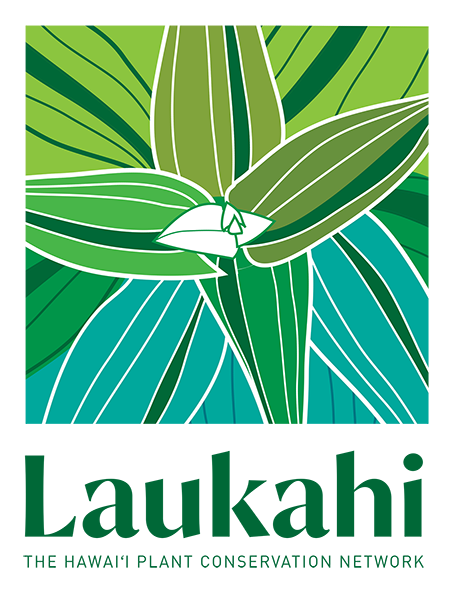
Laukahi: Hawaiʻi Plant Conservation Network Exhibit Table
What is Laukahi?
Learn more about Laukahi at laukahi.org

Mālama Pūpūkea-Waimea Exhibit Table
Mālama Pūpūkea-Waimea is the volunteer-based community non-profit that cares for, educates about, and protects the Pūpūkea Marine Life Conservation District and surrounding areas.

Mission: Working to replenish and sustain the natural and cultural resources of the Pūpūkea and Waimea ahupua‘a for present and future generations through active community stewardship, education, and partnerships.
There are many ways for you to get involved:
- Outreach and Education – We offer an array of learning opportunities from site visits to in-class presentations.
- Makai Watch – Training, prevention, and reporting of illegal fishing and other ocean activities within the MLCD through a collaboration with DLNR-DOCARE.
- Native Hawaiian Plant Coastal Restoration – Removing invasives and planting natives to help reduce erosion and protect the coral reef below.
- Biological (Fish, Invertebrates, Limu) and Human Use Monitoring
- Ka Papa Kai and Lawai‘a Pono – Marine science and ethical fishing based on cultural knowledge for youth.
- Beach cleanups, and more!
Visit us at:
Mālama Pūpūkea-Waimea Brochure

Maui Forest Bird Recovery Project Exhibit Table
The Maui Forest Bird Recovery Project (MFBRP) is driven by science and dedicated to the conservation of our native ecosystems. MFBRP develops and implements techniques to recover Mauiʻs endangered birds and to restore their habitat.
The kiwikiu (Maui Parrotbill; Pseudonestor xanthophrys), a critically endangered Hawaiian honeycreeper, endemic to the island of Maui is one of the focus species MFBRP is currently working to protect.

The wild population of kiwikiu is dramatically declining. Surveys from 1980 and again 1997 estimated about 500 individuals. In 2017 the estimated population was just 157. The following is a video about the recent translocation attempt to help save the kiwikiu:
Kiwikiu, like all our native Hawaiian birds, face a combination of problems but currently, the worst is avian malaria. To help save the kiwikiu a multi-step approach, including the implementation of landscape-level mosquito control, has been proposed.
MFBRP represents a partnership effort by Hawaiʻiʻs Department of Land and Natural Resources-Division of Forestry and Wildlife (DOFAW), the Pacific Cooperative Studies Unit (PCSU), the Research Corporation of the University of Hawaiʻi (RCUH), the U.S. Fish and Wildlife Service (USFWS), and Nā Koa Manu Conservation.
To find out more information about MFBRP please visit: https://mauiforestbirds.org
Follow us on social media:
Facebook: http://facebook.com/MauiForestBirds
Instagram: https://www.instagram.com/mauiforestbirds/
Twitter: http://twitter.com/mauiforestbird1

It takes a community of dedicated individuals and support to make conservation happen
Photos by Robby Kohley & Zach Pezzillo

National Park Service Exhibit Table
Haleakala National Park
Haleakalā: A Rare and Sacred Landscape
Honouliuli National Historic Site
Fighting for Freedom
Hawai‘i Volcanoes National Park
Kealakomo Burn at Hawai’i Volcanoes National Park
Pacific Island Inventory and Monitoring Network
Ala Kahakai National Historic Trail
Kalaupapa National Historic Park
Kaloko-Honokōhau National Historic Park
Puʻuhonua o Hōnaunau National Historic Park
Puʻukoholā Heiau National Historic Site
Pearl Harbor National Historic Site
Guam- War in the Pacific National Historic Park
Saipan- American Memorial Park
American Samoa- National Park of American Samoa
NPS Community Assistance Program – Rivers, Trails, & Conservation Assistance (RTCA)
RTCA Program – Working with Communities
RTCA Program – Green Infrastructure
NPS RTCA Hawai’i Projects Storymap

Pacific Islands Climate Adaptation Science Center (PI-CASC) Exhibit Table
The Pacific Islands Climate Adaptation Science Center (PI-CASC) is one of a network of nine regional centers established by the Department of the Interior and managed by the US Geological Survey. PI-CASC aims to provide scientific information, tools, and techniques to natural and cultural resource managers, community members, and decision makers to help them anticipate, monitor, and adapt to climate change and variability. PI-CASC is hosted by a university consortium led by the University of Hawaiʻi at Mānoa in cooperation with the University of Hawaiʻi at Hilo and the University of Guam.
Important links:
- Learn more about our science, activities, and people at picasc.org.
- Follow us on Facebook, Twitter, and Instagram with our handle @pacificcasc
- Sign up for our monthly newsletter, the Pacific Pandanus, here.
- Join in discussions about managing invasive species and climate change with Pacific RISCC
Watch this recent compilation of projects focused on water science and water resource management:
Adaptation Research in our Waters from Clouds to Coast

State of Hawaiʻi Division of Forestry and Wildlife Exhibit Table
New! Outerspatial App
The Department of Land and Natural Resources, Division of Forestry and Wildlife, is pleased to announce that information about trails and areas managed by DOFAW (totaling over one million acres, roughly a quarter of the land area in Hawaiʻi) is now on the app Outerspatial.
Want to learn more before you download? Visit the Hawaiʻi Community page on the Outerspatial website at https://outerspatial.link/hawaii.
![]() Download the app at the links below or scan our QR code with your smartphone camera.
Download the app at the links below or scan our QR code with your smartphone camera.
The Outerspatial App supports mobile check-in for most check-in stations. Mobile check-in requires a full battery and the ability to display your check-in to officers.
Story Maps, Virtual Tours & Videos
Visit Wildlife Sanctuaries through our story maps and virtual tours at dlnr.hawaii.gov/wildlife/sanctuaries/
Watch our PSAs and short films on our video hub at dlnr.hawaii.gov/dofaw/education/videos/
Lehua Island Seabird Sanctuary StoryMap
Yellow-Faced Bee Translocation at Kaʻena
Hawaiʻi’s endangered yellow-faced bees have a new home at Kaʻena Point on Oʻahu, thanks to a translocation project undertaken by the Department of Land and Natural Resources (Division of Forestry & Wildlife and Division of State Parks), the US Fish and Wildlife Service, and the University of Hawaiʻi.
When Camping in Hawaiʻi, Be Like Smokey
In Hawaiʻi, roughly 90% of wildfires are caused by humans. The most effective fire prevention tool is you! Check out our Smokey Bear public service announcements below on how adult campers and Hawaiʻi’s keiki can help prevent wildfires.
Keiki Can Help Smokey Prevent Wildfires!
How Biocontrol Helps Hawaiʻi
Learn about the Biocontrol process that can provide long-term, cost-effective, and sustainable pest management. Projects in Hawaiʻi are cooperative efforts between multiple agencies and organizations, including the Hawaiʻi Department of Land and Natural Resources Division of Forestry and Wildlife, Hawaiʻi Department of Agriculture, USDA Forest Service, University of Hawaiʻi, and international partners to plan, research, implement, and monitor projects.
Digital Swag
Opening paragraph: Get our digital swag & decorate your phone, computer, and meetings!
Visit: dlnr.hawaii.gov/dofaw/education/backgrounds/ or our Oʻahu DOFAW Instagram @oahudofaw
Phone Wallpapers

The Nature Conservancy, Hawai‘i and Palmyra Exhibit Table
From mauka to makai, The Nature Conservancy, Hawai‘i and Palmyra works with people like you to conserve the lands and waters on which all life depends. We have forged partnerships to manage over 2 million acres of natural lands in Hawai‘i and Palmyra Atoll, working with government, private parties and communities to protect Hawai‘i’s and Palmyra’s forests and coral reefs for their ecological value and for the many benefits they provide to people.
Since our Hawai‘i chapter’s founding in 1980, we created a network of forest preserves and helped catalyze watershed partnerships across the islands. In 2000, we established a marine program to protect coral reefs by working with communities and collaborated with partners to create a living laboratory at Palmyra Atoll to find global solutions to climate questions. Guided by science, we create innovative, on-the-ground solutions to our world’s toughest challenges so that nature and people can thrive together.
To learn more, visit nature.org/hawaii.
Four Decades in Hawai‘i:
We celebrated 40 years in Hawai‘i with a webinar series featuring The Changemakers, The Catalysts, The Communities and The Collaborators. Watch them all here: https://www.nature.org/en-us/get-involved/how-to-help/volunteer-and-attend-events/find-local-events-and-opportunities/hawaii-palmyra-webinars/
A Vanishing Mural:
We partnered with Jana Ireijo, Artist and Founder, Mural Ethos, to create a vanishing mural to highlight the beauty and threats to Hawai‘i’s coral reefs.
Becoming a Conservationist:
Witness Nic Barca’s journey from local fisher and hunter to conservationist in Saving Wai
Return of the Shearwaters:
From just 2 nests in 1999, the shearwater colony at our Moʻomomi Preserve on Molokaʻi has blossomed. Today there are nearly 1,500 nests and more than 3,200 birds!
Visit us on YouTube to see more wonderful stories! https://www.youtube.com/channel/UC7UTShqq6gUmIKgf0aMGnlw
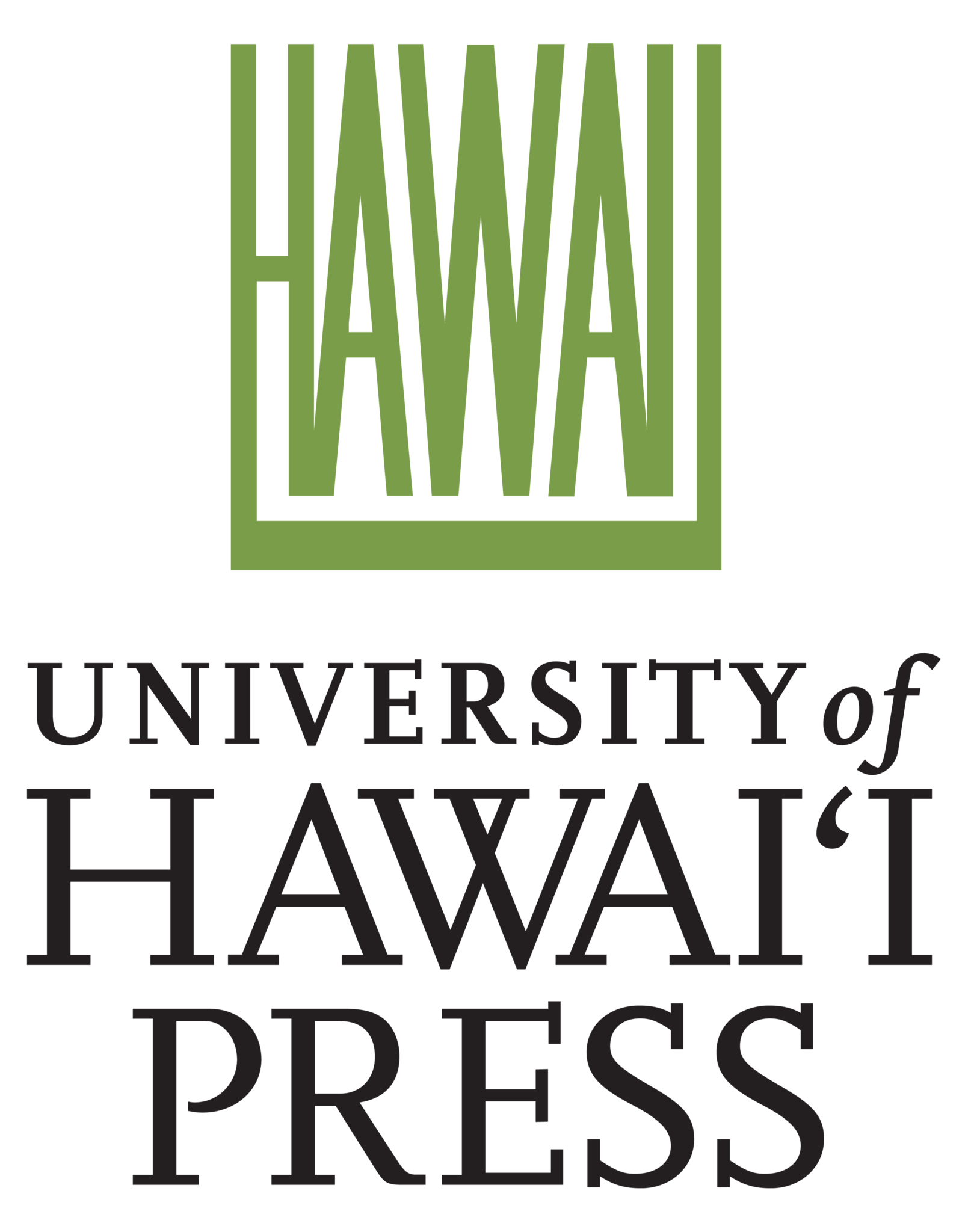
University of Hawaiʻi Press Exhibit Table
Mahalo for visiting the UH Press virtual exhibit! Our publishing program focuses on the Asia and Pacific regions, with books and journals in the humanities, social sciences, and natural sciences. Subject areas include anthropology, archaeology, history, religion, languages, literature, art and architecture, among others. As a support unit of the University of Hawai‘i at Mānoa, we are the preeminent publisher of scholarly works on Hawai‘i and the Pacific Islands, and known for regional guidebooks and maps.
For book proposals, we welcome queries at any stage of development. Please see our Author Guidelines (https://uhpress.hawaii.edu/authors/) for more information. Inquiries may be sent to associate acquisitions editor Emma Ching (emma6@hawaii.edu).
CONFERENCE OFFER: Order on our website and receive a 20% discount + free media mail shipping on selected books until August 31, 2021. Use coupon code: HCONS21. https://uhpress.hawaii.edu/
New & Recent Titles
PACIFIC SCIENCE, Volume 75, Number 2 (April 2021)
Special issue dedicated to Dr. Isabella Abbott
Guest editor: Celia Smith
Read the Introduction free: https://muse.jhu.edu/issue/45090
Isabella Kauakea Yau Yung Aiona Abbott: Contributions to a Celebration of the Centennial of her Birth
by Rosie Alegado, Cindy Hunter, Celia Smith
Marine Biology Graduate Program, University of Hawai‘i at Mānoa
Watch the book trailer for MANU, THE BOY WHO LOVED BIRDS, written and illustrated by Caren Loebel-Fried.
Visit her website for educational resources and more information: http://www.carenloebelfried.com/.
— A L O H A —

USDA APHIS-Wildlife Services Exhibit Table

In May, APHIS was awarded the prestigious Presidential Migratory Bird Federal Stewardship Award by the U.S. Fish and Wildlife Service. The recognition is for Wildlife Services (WS) work to protect the Hawaiian goose and Laysan albatross.
Read more here:
More on our work using Canines with Nene
You can learn more about at Wildlife Hazard Management at Airports here:
APHIS YouTube Airport Hazard Playlist
https://www.youtube.com/playlist?list=PLF1BE3AC34367E99E
In partnership with the University of Maryland, Students complete their capstone project creating a Story Map on Managing Invasive Species on Islands
Learn more at: https://www.aphis.usda.gov/aphis/maps/sa_wildlife_services/ws-managing-invasive-species
Check out some of the working being done to protect our islands:
Feral Swine Management Overview and Impacts to native wildlife and Threatened and Endangered Species

Waimea Valley Exhibit Table
Waimea Valley’s volunteers are an important part of our mission as an organization, not only do they help us do essential work to support the preservation of our cultural sites and knowledge, they also play a big role in our environmental conservation, forest restoration, and botanical garden maintenance. We have opportunities for both groups and individuals to join the volunteer team and help this beautiful valley thrive. There are 3 main ways that volunteers can get involved here, they are: registering for individual volunteer opportunities, joining us for volunteer events, and setting up group projects.

